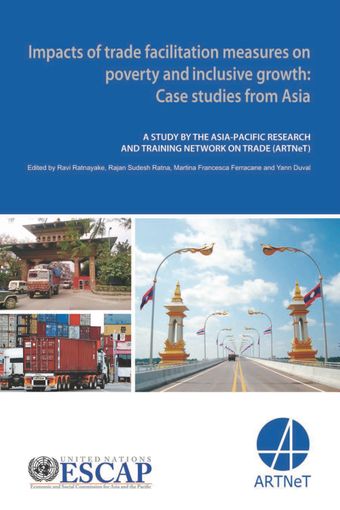Trade facilitation and poverty reduction: China-ASEAN region case study

- Author: Laping Wu
- Main Title: Impacts of trade facilitation measures on poverty and inclusive growth , pp 81-107
- Publication Date: December 2013
- DOI: https://doi.org/10.18356/0c95ff35-en
- Language: English
Zhongying Sun (2009) applied a gravity model in his study of the role of trade facilitation; the results showed that the elasticities were different for the various trade facilitation measures. Port efficiency has positive effects in bilateral trade, both for importers and for exporters. Juanjuan Xie and Jing Yue (2011) made an empirical analysis of China-ASEAN trade using a gravity model. Junlan Shang and Ping Zhou (2012) also constructed a gravity model to analyse the impacts of trade facilitation on China-ASEAN trade, they also studied the impacts of trade facilitation on Chinese trade, and compared trade facilitation and tariff reductions; the results showed that trade facilitation could improve trade much more than tariff reductions. Lin Sun and Xufei Xu (2011) measured trade facilitation from port efficiency, customs environment, regulation and e-commerce. The results showed that the level of Chinese trade facilitation is near the world average, but among ASEAN countries there is a big gap. Singapore is much higher than average while Malaysia, Thailand and Brunei Darussalam are also near the world average. Viet Nam and Indonesia are lower than average.
© United Nations
ISBN (PDF):
9789210566414
Book DOI:
https://doi.org/10.18356/4cee1944-en
Related Subject(s):
Economic and Social Development
Sustainable Development Goals:
-
From This Site
/content/books/9789210566414c007dcterms_title,dcterms_subject,pub_keyword-contentType:Journal -contentType:Contributor -contentType:Concept -contentType:Institution105
/content/books/9789210566414c007
dcterms_title,dcterms_subject,pub_keyword
-contentType:Journal -contentType:Contributor -contentType:Concept -contentType:Institution
10
5


